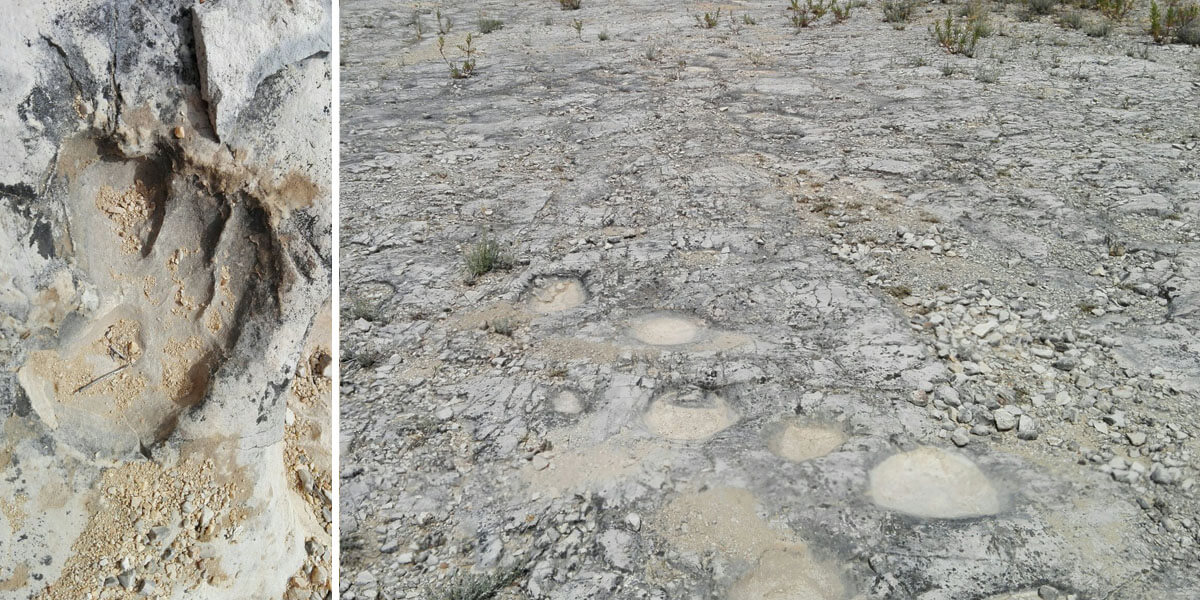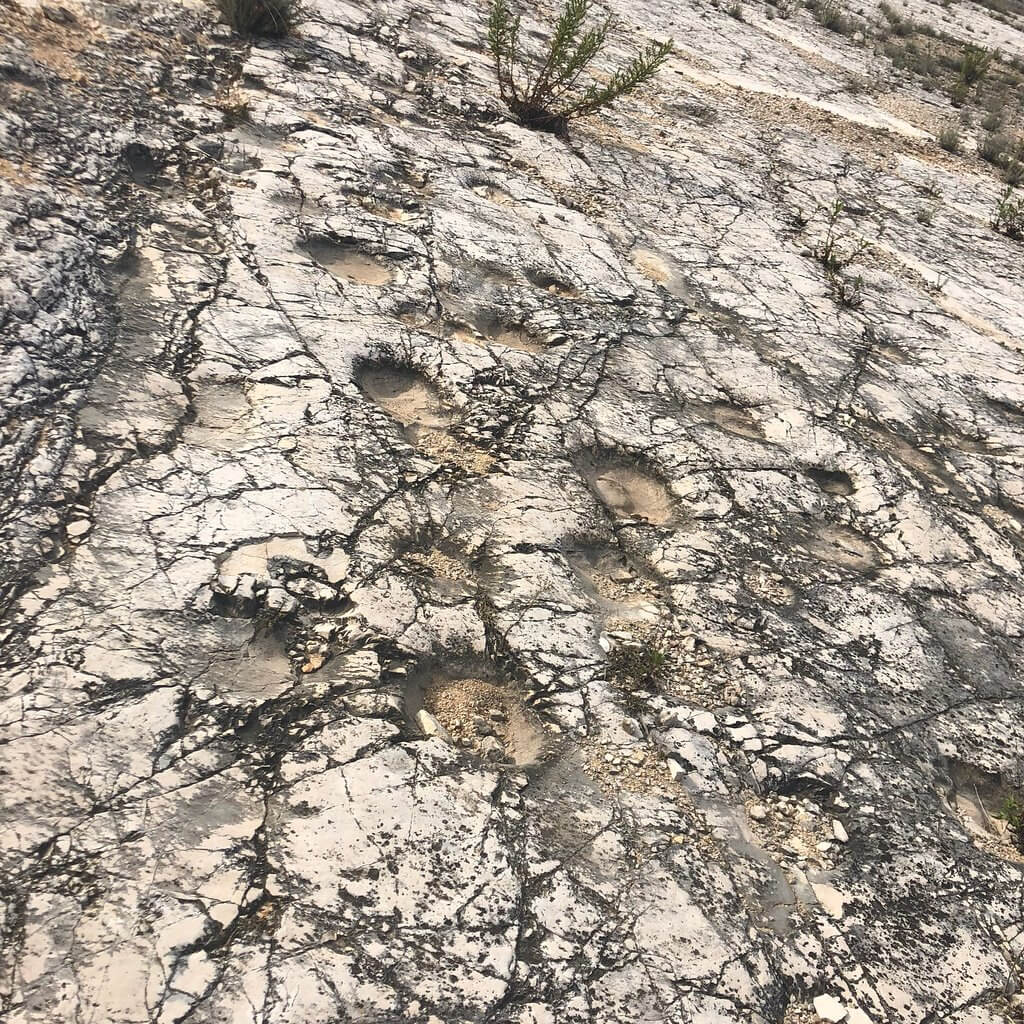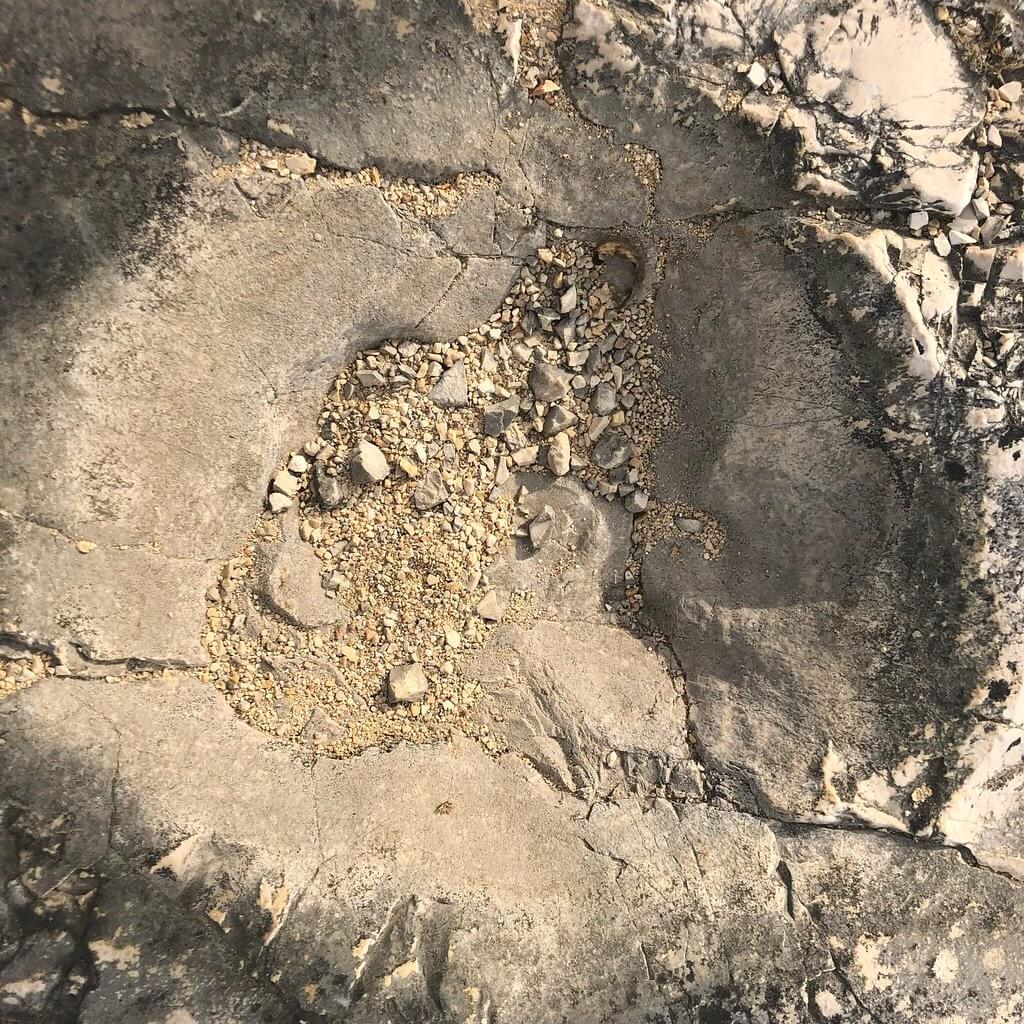In Pontrelli, near Altamura, about thirty thousand dinosaur footprints were discovered in an area of twelve thousand square meters in 1999. The great importance of this discovery (today this is the richest and most important site in Europe and perhaps in the world) lies in the very high biodiversity that characterized the individuals present simultaneously in the same place. The footprints date back to the Upper Cretaceous period, between 70 and 80 million years ago, when the climate in Apulia was tropical (humid heat), and testify to the presence of over two hundred animals, belonging to at least five different groups of dinosaurs, herbivores and also carnivores.
The dimensions of the prints vary from 5-6 cm up to 40-45 cm, suggesting that these animals were up to 10 meters high. In many footprints it is even possible to read the folds of the skin. This exceptional state of preservation of the prints is most likely due to the presence of a marshy ground with a muddy bottom, with seaweed carpets that allowed the cementation of the impression. In many footprints it is in fact still visible the small wave of mud generated when the animal has placed the paw on the ground. From the reading of the footprints and above all of the tracks, or of a series of at least three consecutive footprints, or three pairs hand-foot in the case of quadrupeds animals, left by the same animal in movement, it is evident that the gaits are normal, without traces of panic , demonstrating the fact that it was a normal movement of the animals while they were quietly grazing in a presumably lagoon environment.
From the quantity of footprints and their dimensions we can easily account for the really large quantities of vegetables that had to be present on site in order to satisfy the survival needs of so many animals. One of the identified tracks belongs to a Ceropode (herbivorous dinosaur, quadruped, of average tonnage): it reveals an uncertainty in the course, perhaps a sudden change of pace, to avoid a sudden obstacle or change direction.



